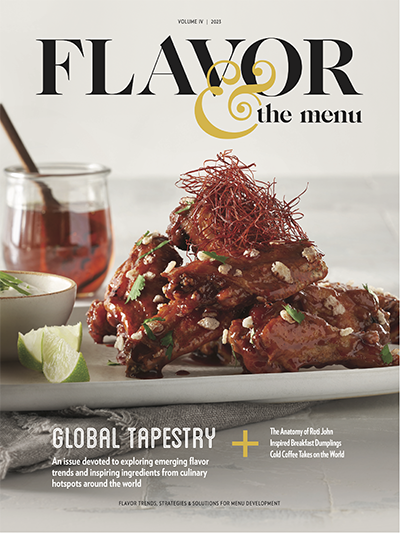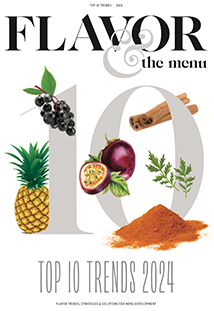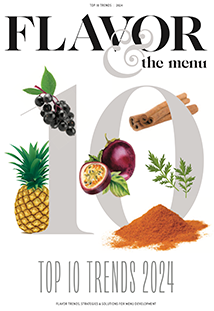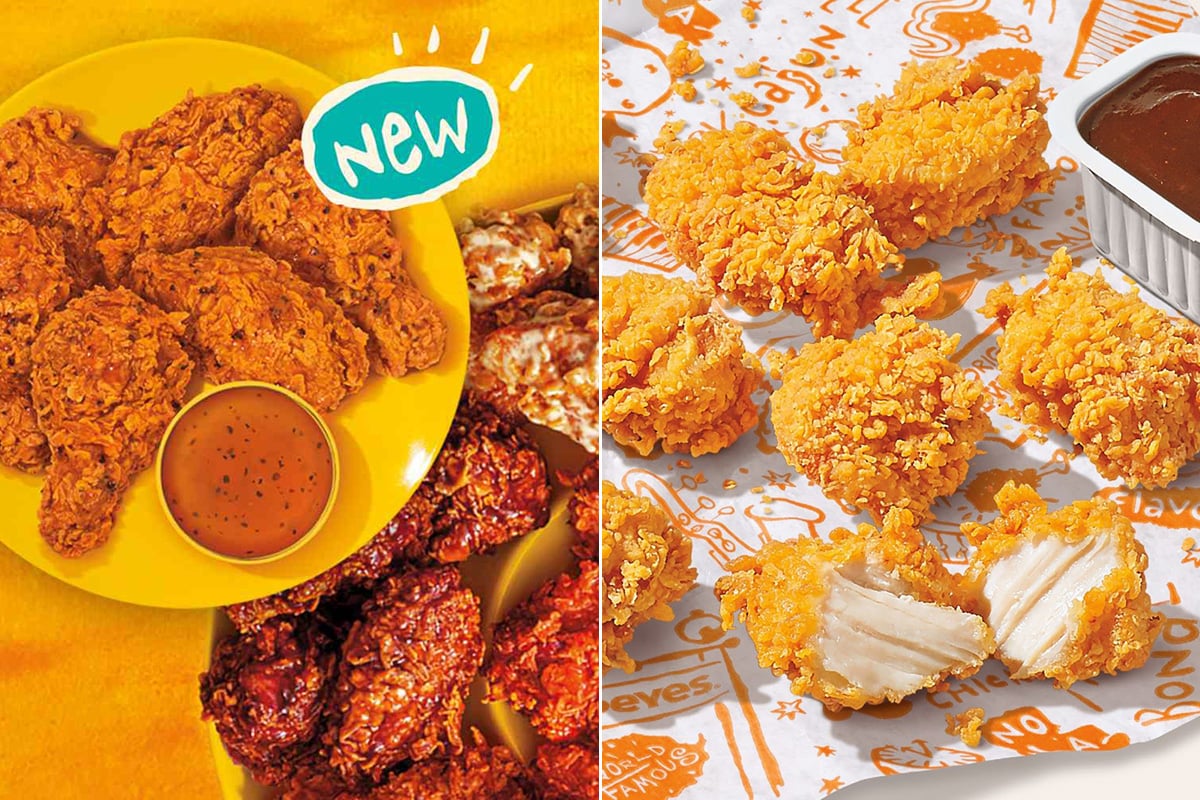
Flavor Trailblazer: Amy Alarcon
Modern flavor play keeps this heritage brand fresh
Flavor Trailblazer: Amy Alarcon
Modern flavor play keeps this heritage brand fresh
By Katie Ayoub
April 25, 2024
By Katie Ayoub
April 25, 2024
Popeyes Louisiana Kitchen boasts a formidable legacy in quick service, spanning more than 50 years and encompassing 4,000-plus locations worldwide. It carved out a niche early on with its signature spicy fried chicken. Moreover, the brand has consistently pursued innovation, as exemplified by its recent expansion into the wings market. We sat down with Amy Alarcon, VP of culinary innovation, to discover how she approaches menu extensions and the exploration of new flavor frontiers.
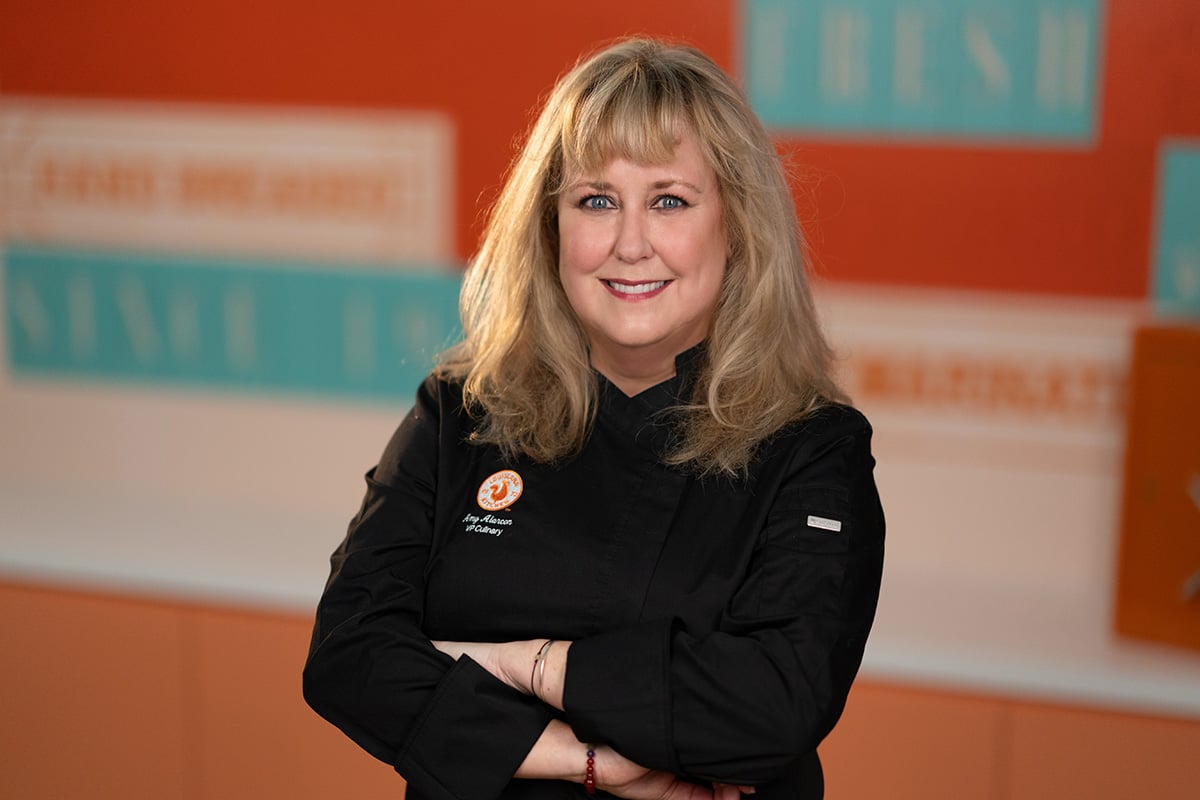
Amy Alarcon
Katie Ayoub: What’s the bestseller at Popeyes?
Amy Alarcon: At the end of the day, we’re still a classic fried chicken chain. We’ve certainly proliferated and grown in a lot of areas, but that’s who we are at heart. The origin of Popeyes is a fun story: Our founder started with a mild product, and our name was different—we were called Chicken on the Run. It just wasn’t that successful. So he went back to the drawing board and redeveloped old family recipes using his Cajun grandmother’s spices that she was known for. He reopened with spicy chicken only, under the name of Popeyes. That’s what really hit it and just blew up.
KA: Describe your creative process for developing new builds.
AA: I was dining with my team in North Carolina this week, and the experience reminded me that Southern food, in general, is never stale or tired or old. There’s always something to explore and discover. I get inspiration just eating out with my team—a healthy blend of chefs and food scientists—and we all feed off each other’s energy and enthusiasm. So, when our marketing team comes to us and says, “Hey, there’s this blank space on the menu we need to fill,” and they give us enough information to know who we’re talking to, how much we want to spend, what daypart we’re working with, then we know what we’re trying to solve for. Product development is problem solving.
We’re tied very deeply to New Orleans and Louisiana, but I also find it super interesting to be in other places in the U.S. and see how they think about Louisiana cuisine and Southern food in general. It’s important because Popeyes is everywhere.
KA: What’s your LTO process like?
AA: There’s not necessarily a set amount of LTOs we need to do in a year. Instead, our innovation is tied to our business objectives. We launched wings late last year and right now we are concerned with making sure people know we have them and bringing the news to customers.
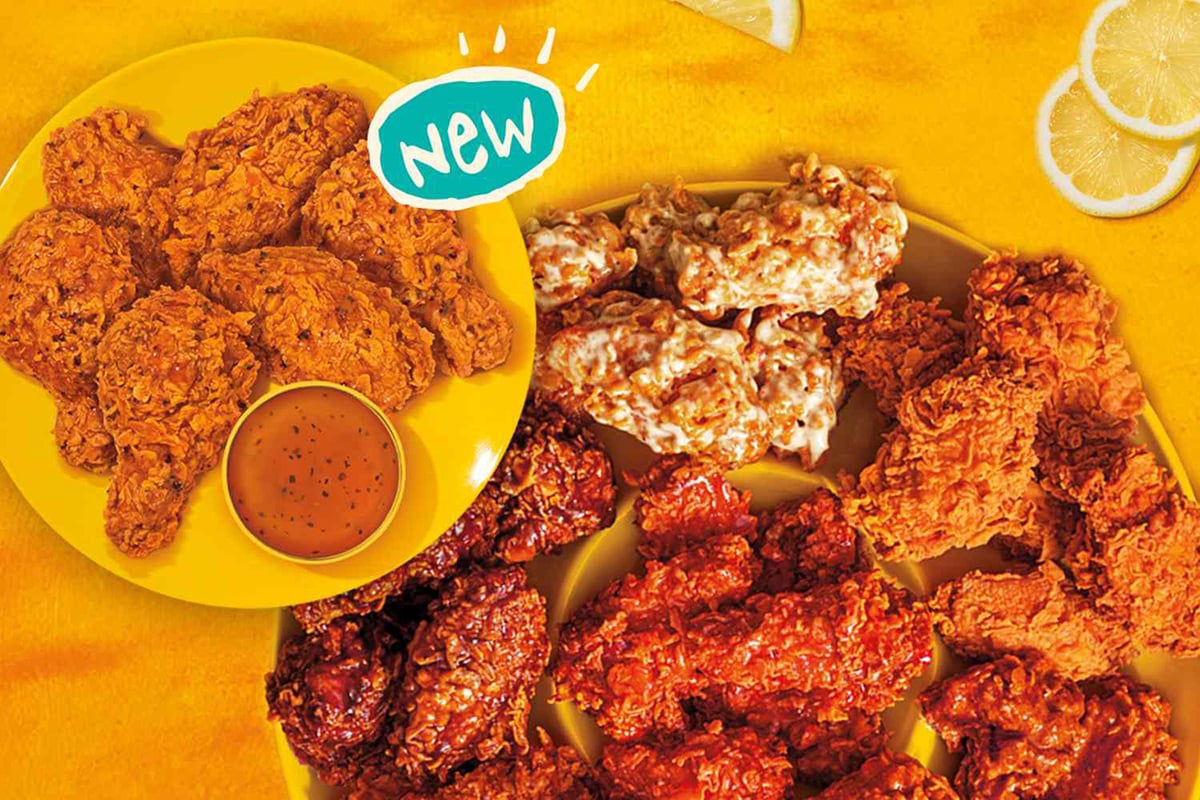 Photo Credit: Popeyes
Photo Credit: Popeyes The brand’s push into the wing space sees a staple of five sauces—Roasted Garlic Parmesan, Ghost Pepper, Signature Hot, Sweet ‘N Spicy and Honey BBQ, plus the addition of Lemon Pepper Wings to the mix.
KA: You rolled out wings last year, introducing five flavors and now have added Honey Lemon Pepper, a play on the red-hot combination of sweet heat. How did you land on that ingredient combination?
AA: We’re always looking at who’s doing what and what are really popular flavors, but you have to do it in the personality and the style of your own brand—we did sweet heat the Popeyes way. We’ve already been featuring this combo in our long-running Sweet Heat dipping sauce; it’s one of our most popular sauces. Sweet heat is a magic flavor combination, so taking lemon pepper, which is a pretty popular, pretty common wing flavor, and then adding a really good honey and turning it into a sauce was our way of doing it. I think that approach really connected with our guests.
KA: How is the texture of the crispy chicken affected by the new sauce?
AA: We’re known for our “shatter crunch.” And we’re known for having that great texture play, a really sensual experience. Our wings are basically baby versions of the classic spicy fried chicken. And it really connected with our guests. The honey is rich and thick, but it doesn’t dampen the crust so it allows the texture to stay where it is and sing through.
KA: How adventurous is the quick-service diner today?
AA: We’re most excited to find out what our base quick-service guest in the U.S. is willing to try. How far are they willing to stretch? What really cool flavors can we throw in there? We have the benefit of being a globally growing brand. We’ve opened in Indonesia, India and Sri Lanka; we’re finally back into China and South Korea post-COVID, so we look at those markets as fuel for innovation. Also, when you talk about Louisiana and New Orleans, it is a cultural melting pot. French, Spanish, Italian, German, British, Native American—it’s the food of enslaved people. It’s Caribbean culture, and you’ve got the Irish, the Vietnamese. The hottest restaurant in New Orleans right now is Senegalese. So for us, our funnel for innovation can start with the question: Where in the world are we going today?
KA: You entered the fried chicken sandwich wars a few years ago. Tell me about that.
AA: That’s actually a story of “try and try and try until you get it right,” because we’ve certainly had chicken sandwiches over the years. We’ve done po’ boys; we’ve done all kinds of stuff. We knew where not to go this time, but in a way that was very freeing. So when we were working on the development of our fried chicken sandwich, we thought about what’s out there that’s really cool and how do we incorporate that, but make it Popeyes.
At the time, we were seeing a lot of artisanal-looking buns that didn’t appear egg-washed or shiny. So we worked with a bakery to come up with the brioche bun that we use. We didn’t want it to be overly sweet, and we pulled back a little bit on the butter notes, too. There were a couple of things I knew I wanted the sandwich to have, including a buttered bun because it actually serves a functional purpose and keeps the sauce from melting into the bread. And I knew I wanted to play with the batter and breading. It’s a really cool buttermilk-herb batter and breading system with a lot of leavening and the breading itself has a little bit of cake flour in it. It makes it a lot lighter in regards to that crunch, the way it crunches and the way it holds the crunch longer.
In our environment now, with a lot of our business going through the drive-thru or delivery, it’s important. Another element on that sandwich that makes it unique is our beautiful, barrel-aged pickle. It’s fresh, not acidified or shelf-stable. And then I always try to weave the storyline back to Louisiana, so we chose to work with Blue Plate Mayonnaise. Lastly, to answer the question of why this is Popeyes product, for the spicy version, we mix the spices that we use in the marinade right into the mayo. And the chicken itself has the exact same flavor system that goes inside our classic fried chicken. One of my chefs said that our chicken sandwich is like being able to hold the Popeyes story in your hands.
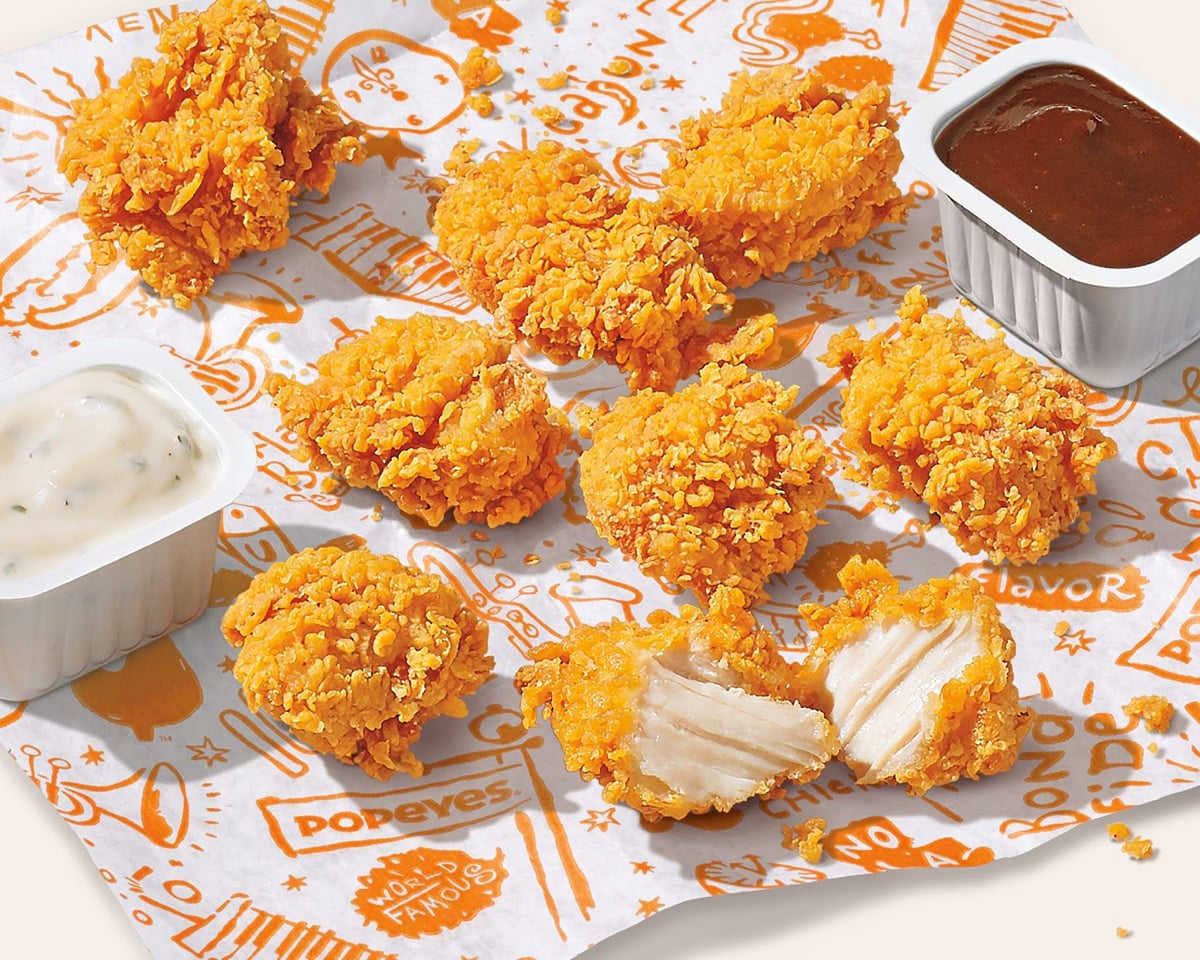 Photo Credit: Popeyes
Photo Credit: Popeyes A vehicle for sauce trial, Popeyes Chicken Nuggets feature chicken breast pieces made with white meat that is hand-battered and breaded in a buttermilk coating. They come with two sauces, ranging from Sweet Heat and Bayou Buffalo Sauce to Mardi Gras Mustard and Buttermilk Ranch.
KA: What was the menu imperative behind introducing Popeyes Chicken Nuggets?
AA: We wanted to create an experience like the chicken sandwich. It’s just a smaller version; it’s the same breading but a little bit smaller and more dip-friendly. The thing about products like the nugget is that it’s just an excuse for eating sauce.
KA: Nuggets answer the growing call for the snacking occasion, too.
AA: It definitely does provide a great snacking option for our guests. It’s also meant to be kid-friendly. And, we do such a great job with our sauces, so it’s a way to showcase them and have guests try them.
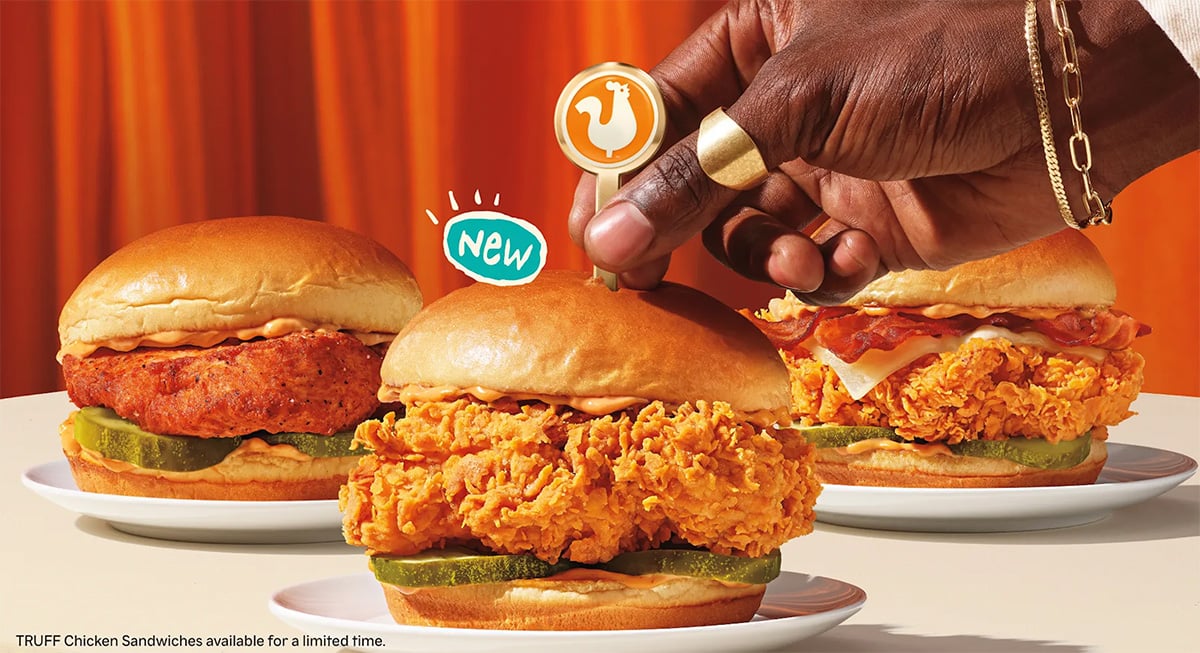 Photo Credit: Popeyes
Photo Credit: Popeyes The Spicy Truff Chicken Sandwich offers the unexpected—Popeyes’ crispy Louisiana fried chicken sandwich paired with a spicy mayo infused with black winter truffle, served on a brioche bun with barrel-aged pickle slices.
KA: Describe the creative process behind the Spicy Truff Chicken Sandwich.
AA: It was about exploring the unexpected. I really like that juxtaposition of high and low. We saw the Truff product at the grocery store and took the condiment back to our test kitchen. The flavors were just beautiful together. It felt like a natural fit.
KA: Tell me about an LTO that just didn’t land with your guests.
AA: I’ve got a wall of shame a mile long from over the years! That’s all part of innovation. Here’s one example: We worked on a product that featured our biscuit dough, making it into an empanada, inspired by Louisiana’s meat pie tradition. It had biscuit dough in the crust then a cool seafood and jambalaya filling. It just didn’t connect with the guests. I think it’s because they’re so used to our fried chicken experience. The feedback we kept getting was that it looked like a Hot Pocket. After I stopped crying, I picked myself up off the floor and realized guests just weren’t ready for it. I’m going to figure out how to get that done one day because I think it’s a really cool idea. Sometimes you do stuff, and it doesn’t work and you sit on it for a couple of years and then you come back at it a different way and it winds up working.
QUICKFIRE
Something in your fridge that would surprise people:
After I go on vacation, I usually spend the next six months going down the rabbit hole of the flavors I discovered. I was recently in Morocco and am now trying to figure out the best way to make preserved lemons. I also picked up argan oil, which they use for cooking applications. It will remind you of sesame oil a little bit, but the body’s more like olive oil.
Cuisine or ingredient you’re particularly excited to explore:
I’m playing more with fermented pepper flavors—I love to explore different pepper mashes. And because we’re in this world of sauce around the wings platform, it always gives me a reason to explore hot sauces further. The combination of sweet and heat is definitely not going away—it’s like the new ranch or the new ketchup. It’s just the new flavor that we all know and love and accept.
Your go-to late-night snack:
I love to make fresh popcorn cooked in avocado oil and seasoned with Maldon sea salt. I use the old-fashioned Whirley Pop, then I crush the big flakes of salt in my hands. Sometimes I’ll do a little sprinkle of Himalayan sea salt, too.
Best bite you’ve had recently:
Ashley Christensen’s waffles with honey and butter at Beasley’s Chicken + Honey in Raleigh, N.C. They were perfect: multi-note, crunchy on the outside, but not too crunchy. And the inside was just so light and delicate and melty.
Popeyes Louisiana Kitchen boasts a formidable legacy in quick service, spanning more than 50 years and encompassing 4,000-plus locations worldwide. It carved out a niche early on with its signature spicy fried chicken. Moreover, the brand has consistently pursued innovation, as exemplified by its recent expansion into the wings market. We sat down with Amy Alarcon, VP of culinary innovation, to discover how she approaches menu extensions and the exploration of new flavor frontiers.

Amy Alarcon
Katie Ayoub: What’s the bestseller at Popeyes?
Amy Alarcon: At the end of the day, we’re still a classic fried chicken chain. We’ve certainly proliferated and grown in a lot of areas, but that’s who we are at heart. The origin of Popeyes is a fun story: Our founder started with a mild product, and our name was different—we were called Chicken on the Run. It just wasn’t that successful. So he went back to the drawing board and redeveloped old family recipes using his Cajun grandmother’s spices that she was known for. He reopened with spicy chicken only, under the name of Popeyes. That’s what really hit it and just blew up.
KA: Describe your creative process for developing new builds.
AA: I was dining with my team in North Carolina this week, and the experience reminded me that Southern food, in general, is never stale or tired or old. There’s always something to explore and discover. I get inspiration just eating out with my team—a healthy blend of chefs and food scientists—and we all feed off each other’s energy and enthusiasm. So, when our marketing team comes to us and says, “Hey, there’s this blank space on the menu we need to fill,” and they give us enough information to know who we’re talking to, how much we want to spend, what daypart we’re working with, then we know what we’re trying to solve for. Product development is problem solving.
We’re tied very deeply to New Orleans and Louisiana, but I also find it super interesting to be in other places in the U.S. and see how they think about Louisiana cuisine and Southern food in general. It’s important because Popeyes is everywhere.
KA: What’s your LTO process like?
AA: There’s not necessarily a set amount of LTOs we need to do in a year. Instead, our innovation is tied to our business objectives. We launched wings late last year and right now we are concerned with making sure people know we have them and bringing the news to customers.
 Photo Credit: Popeyes
Photo Credit: Popeyes The brand’s push into the wing space sees a staple of five sauces—Roasted Garlic Parmesan, Ghost Pepper, Signature Hot, Sweet ‘N Spicy and Honey BBQ, plus the addition of Lemon Pepper Wings to the mix.
KA: You rolled out wings last year, introducing five flavors and now have added Honey Lemon Pepper, a play on the red-hot combination of sweet heat. How did you land on that ingredient combination?
AA: We’re always looking at who’s doing what and what are really popular flavors, but you have to do it in the personality and the style of your own brand—we did sweet heat the Popeyes way. We’ve already been featuring this combo in our long-running Sweet Heat dipping sauce; it’s one of our most popular sauces. Sweet heat is a magic flavor combination, so taking lemon pepper, which is a pretty popular, pretty common wing flavor, and then adding a really good honey and turning it into a sauce was our way of doing it. I think that approach really connected with our guests.
KA: How is the texture of the crispy chicken affected by the new sauce?
AA: We’re known for our “shatter crunch.” And we’re known for having that great texture play, a really sensual experience. Our wings are basically baby versions of the classic spicy fried chicken. And it really connected with our guests. The honey is rich and thick, but it doesn’t dampen the crust so it allows the texture to stay where it is and sing through.
KA: How adventurous is the quick-service diner today?
AA: We’re most excited to find out what our base quick-service guest in the U.S. is willing to try. How far are they willing to stretch? What really cool flavors can we throw in there? We have the benefit of being a globally growing brand. We’ve opened in Indonesia, India and Sri Lanka; we’re finally back into China and South Korea post-COVID, so we look at those markets as fuel for innovation. Also, when you talk about Louisiana and New Orleans, it is a cultural melting pot. French, Spanish, Italian, German, British, Native American—it’s the food of enslaved people. It’s Caribbean culture, and you’ve got the Irish, the Vietnamese. The hottest restaurant in New Orleans right now is Senegalese. So for us, our funnel for innovation can start with the question: Where in the world are we going today?
KA: You entered the fried chicken sandwich wars a few years ago. Tell me about that.
AA: That’s actually a story of “try and try and try until you get it right,” because we’ve certainly had chicken sandwiches over the years. We’ve done po’ boys; we’ve done all kinds of stuff. We knew where not to go this time, but in a way that was very freeing. So when we were working on the development of our fried chicken sandwich, we thought about what’s out there that’s really cool and how do we incorporate that, but make it Popeyes.
At the time, we were seeing a lot of artisanal-looking buns that didn’t appear egg-washed or shiny. So we worked with a bakery to come up with the brioche bun that we use. We didn’t want it to be overly sweet, and we pulled back a little bit on the butter notes, too. There were a couple of things I knew I wanted the sandwich to have, including a buttered bun because it actually serves a functional purpose and keeps the sauce from melting into the bread. And I knew I wanted to play with the batter and breading. It’s a really cool buttermilk-herb batter and breading system with a lot of leavening and the breading itself has a little bit of cake flour in it. It makes it a lot lighter in regards to that crunch, the way it crunches and the way it holds the crunch longer.
In our environment now, with a lot of our business going through the drive-thru or delivery, it’s important. Another element on that sandwich that makes it unique is our beautiful, barrel-aged pickle. It’s fresh, not acidified or shelf-stable. And then I always try to weave the storyline back to Louisiana, so we chose to work with Blue Plate Mayonnaise. Lastly, to answer the question of why this is Popeyes product, for the spicy version, we mix the spices that we use in the marinade right into the mayo. And the chicken itself has the exact same flavor system that goes inside our classic fried chicken. One of my chefs said that our chicken sandwich is like being able to hold the Popeyes story in your hands.
 Photo Credit: Popeyes
Photo Credit: Popeyes A vehicle for sauce trial, Popeyes Chicken Nuggets feature chicken breast pieces made with white meat that is hand-battered and breaded in a buttermilk coating. They come with two sauces, ranging from Sweet Heat and Bayou Buffalo Sauce to Mardi Gras Mustard and Buttermilk Ranch.
KA: What was the menu imperative behind introducing Popeyes Chicken Nuggets?
AA: We wanted to create an experience like the chicken sandwich. It’s just a smaller version; it’s the same breading but a little bit smaller and more dip-friendly. The thing about products like the nugget is that it’s just an excuse for eating sauce.
KA: Nuggets answer the growing call for the snacking occasion, too.
AA: It definitely does provide a great snacking option for our guests. It’s also meant to be kid-friendly. And, we do such a great job with our sauces, so it’s a way to showcase them and have guests try them.
 Photo Credit: Popeyes
Photo Credit: Popeyes The Spicy Truff Chicken Sandwich offers the unexpected—Popeyes’ crispy Louisiana fried chicken sandwich paired with a spicy mayo infused with black winter truffle, served on a brioche bun with barrel-aged pickle slices.
KA: Describe the creative process behind the Spicy Truff Chicken Sandwich.
AA: It was about exploring the unexpected. I really like that juxtaposition of high and low. We saw the Truff product at the grocery store and took the condiment back to our test kitchen. The flavors were just beautiful together. It felt like a natural fit.
KA: Tell me about an LTO that just didn’t land with your guests.
AA: I’ve got a wall of shame a mile long from over the years! That’s all part of innovation. Here’s one example: We worked on a product that featured our biscuit dough, making it into an empanada, inspired by Louisiana’s meat pie tradition. It had biscuit dough in the crust then a cool seafood and jambalaya filling. It just didn’t connect with the guests. I think it’s because they’re so used to our fried chicken experience. The feedback we kept getting was that it looked like a Hot Pocket. After I stopped crying, I picked myself up off the floor and realized guests just weren’t ready for it. I’m going to figure out how to get that done one day because I think it’s a really cool idea. Sometimes you do stuff, and it doesn’t work and you sit on it for a couple of years and then you come back at it a different way and it winds up working.
QUICKFIRE
Something in your fridge that would surprise people:
After I go on vacation, I usually spend the next six months going down the rabbit hole of the flavors I discovered. I was recently in Morocco and am now trying to figure out the best way to make preserved lemons. I also picked up argan oil, which they use for cooking applications. It will remind you of sesame oil a little bit, but the body’s more like olive oil.
Cuisine or ingredient you’re particularly excited to explore:
I’m playing more with fermented pepper flavors—I love to explore different pepper mashes. And because we’re in this world of sauce around the wings platform, it always gives me a reason to explore hot sauces further. The combination of sweet and heat is definitely not going away—it’s like the new ranch or the new ketchup. It’s just the new flavor that we all know and love and accept.
Your go-to late-night snack:
I love to make fresh popcorn cooked in avocado oil and seasoned with Maldon sea salt. I use the old-fashioned Whirley Pop, then I crush the big flakes of salt in my hands. Sometimes I’ll do a little sprinkle of Himalayan sea salt, too.
Best bite you’ve had recently:
Ashley Christensen’s waffles with honey and butter at Beasley’s Chicken + Honey in Raleigh, N.C. They were perfect: multi-note, crunchy on the outside, but not too crunchy. And the inside was just so light and delicate and melty.
About the Author
Katie Ayoub serves as managing editor of Flavor & The Menu and content strategist for the Flavor Experience, an annual conference geared toward chain operators. She is president of Katie Ayoub & Associates, serving up menu trends expertise, content creation and food & beverage consultancy. Based in Chicago, Katie has been working in foodservice publishing for more than 20 years and part of the Flavor team since 2006. [email protected]

